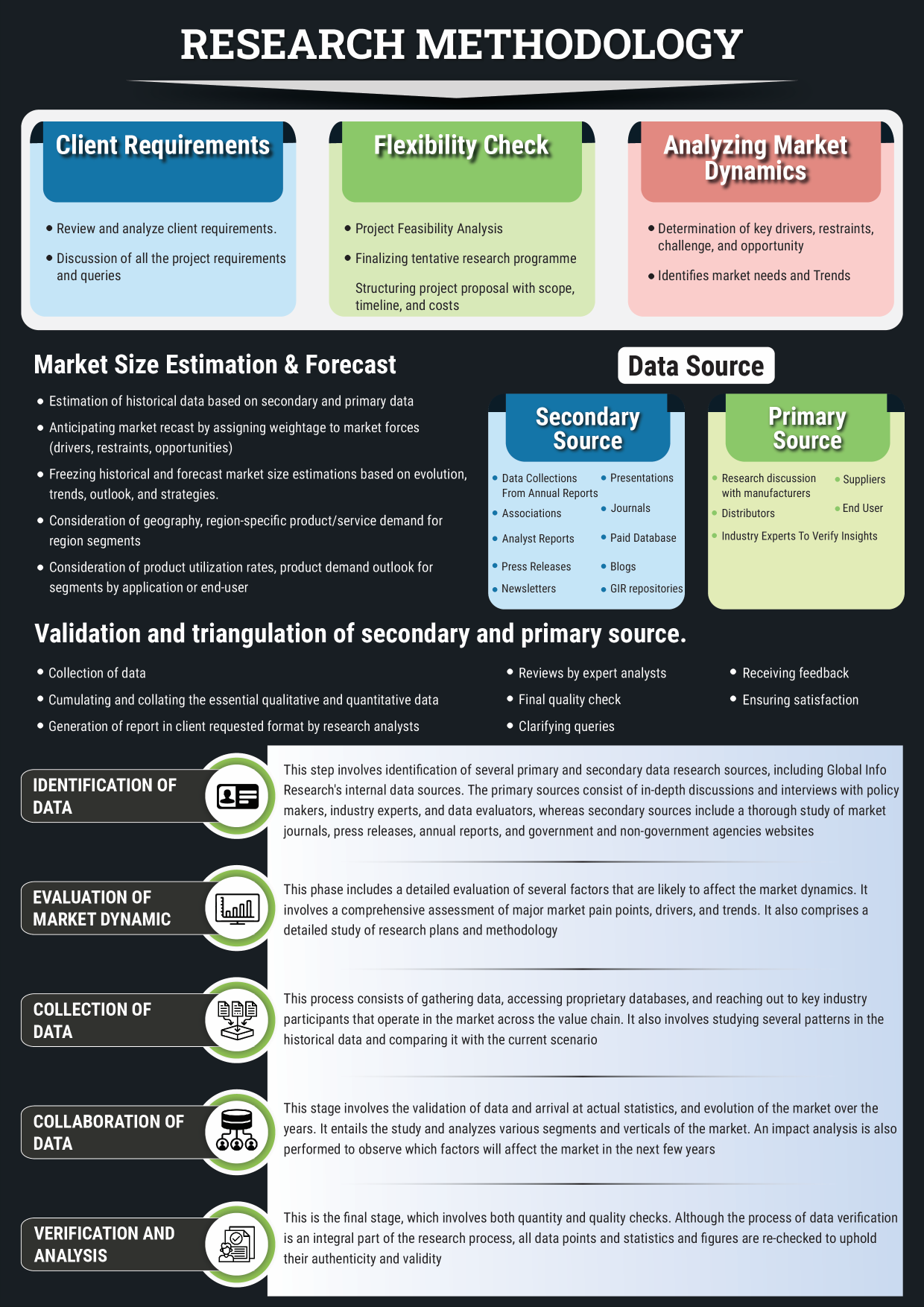Bi-Specific Antibodies Therapy Market 2025: Unlocking the Future of Precision Immunotherapy
Bi-specific antibodies represent a transformative leap in biologic therapy, designed to bind two distinct targets simultaneously. These novel therapies are gaining momentum for their potential to treat complex conditions, particularly in oncology, autoimmune diseases, and chronic inflammatory disorders. As we approach 2025, the bi-specific antibodies therapy market is rapidly evolving—driven by technological innovation, strategic investment, and a strong clinical pipeline.
With their dual-targeting capabilities, bi-specific antibodies are redefining precision medicine, offering the ability to modulate disease pathways more effectively than traditional monoclonal antibodies. For stakeholders in the healthcare and pharmaceutical industries, understanding the key growth dynamics of this market is essential for capitalizing on its potential.
Key Market Drivers Fueling Growth
Several critical factors are contributing to the accelerated expansion of the bi-specific antibodies therapy market:
- Rising Prevalence of Cancer and Autoimmune Disorders: The global burden of cancer and autoimmune conditions is increasing steadily. Bi-specific antibodies offer an innovative therapeutic option by simultaneously targeting tumor antigens and activating immune cells, leading to more efficient disease control.
- Shift Toward Targeted Biologics: Patients and providers alike are seeking treatments that are both more precise and less toxic. Bi-specific antibodies can engage immune responses with minimal off-target effects, making them attractive alternatives to chemotherapy and conventional biologics.
- Regulatory Encouragement: Global health authorities are increasingly recognizing the therapeutic value of bi-specific antibodies. Fast-track designations and orphan drug status are expediting approval timelines, encouraging companies to invest further in development.
- Increased R&D Funding: From big pharma to biotech startups, funding into bispecific platforms has surged. Strategic collaborations and licensing deals are bringing advanced candidates into late-stage trials and closer to commercialization.
Innovation: Expanding the Therapeutic Toolbox
Innovation is at the heart of the bi-specific antibodies therapy market. Continuous advancements in antibody engineering are making these molecules more versatile, safer, and easier to deliver.
- Novel Formats and Structures: Beyond traditional IgG-like formats, researchers are designing smaller, flexible bispecific constructs with enhanced stability, target specificity, and half-life. These innovations improve tissue penetration and reduce immunogenicity.
- Conditionally Activated Therapies: Newer molecules are engineered to activate only in specific microenvironments, such as a tumor site. This localized activation reduces the risk of systemic side effects and expands therapeutic windows.
- Platform Technologies: Companies are investing in proprietary platforms that can rapidly produce a wide range of bispecific configurations. These modular approaches enable quick iteration and customization for diverse indications.
- Smart Delivery Systems: Advances in subcutaneous delivery and extended-release formulations are making these therapies more patient-friendly, improving adherence and clinical outcomes.
Regional Market Dynamics: Varying Growth Trajectories
The global bi-specific antibodies market exhibits distinct regional characteristics, shaped by regulatory environments, healthcare infrastructure, and investment trends.
- North America leads the market due to its robust R&D ecosystem, advanced clinical trial infrastructure, and early adoption of innovative biologics. The U.S. continues to dominate global approvals and commercialization efforts.
- Europe maintains steady growth through centralized regulatory frameworks and well-established biotech hubs in Germany, the UK, and Switzerland. Public–private partnerships are also boosting clinical collaborations across the region.
- Asia-Pacific is emerging as a high-growth territory, particularly in China, Japan, and South Korea. These countries are scaling up biologics manufacturing and increasing investments in antibody discovery platforms.
- Latin America, Middle East, and Africa are still in early-stage market development. However, international partnerships, growing healthcare access, and supportive policy shifts suggest long-term potential.
Strategic Considerations for Market Participants
Stakeholders aiming to succeed in this space must align product development with commercial strategy from an early stage.
- Prioritize Target Selection: Focus on validated disease pathways with unmet needs where bispecific modalities can offer clear advantages.
- Build Robust IP Portfolios: Securing strong intellectual property around formats and delivery mechanisms will be crucial for differentiation and long-term value.
- Forge Strategic Partnerships: Collaborating with academic institutions, biotech innovators, and contract development organizations accelerates clinical timelines and broadens geographic reach.
- Engage Regulators Proactively: Early dialogue with regulatory authorities ensures smoother approval processes and readiness for fast-track opportunities.
- Educate Stakeholders: As bi-specific antibodies are a relatively new modality, clear communication with healthcare professionals, payers, and patients will be vital for uptake.
Conclusion: A Market Ready for Breakthroughs by 2025
As bi-specific antibodies transition from research innovation to clinical application, they are poised to redefine standards in disease treatment. The bi-specific antibodies therapy market is expected to witness sustained growth through 2025, underpinned by clinical success, supportive regulation, and robust investment.
For healthcare organizations, pharmaceutical companies, and research stakeholders, now is the time to act. By leveraging innovation, strategic partnerships, and market insight, players can not only participate in this market but lead its next chapter.
NOTE:
Quants and Trends is proud to offer an extensive portfolio of meticulously researched healthcare market reports, numbering in the thousands. We also provide tailored customization services to ensure our insights align precisely with your strategic objectives and informational needs. For personalized assistance or to discuss your specific requirements, we invite you to get in touch with our team. We also encourage you to request a complimentary sample PDF report. Please visit our Sample Request Page to receive yours today.
Key Market Players
Roche
Amgen
Sanofi
Pfizer
Johnson & Johnson
AstraZeneca
AbbVie
Lindis Biotech
MacroGenics, Inc
Genmab
Alphamab Co. Ltd
Akeso, Inc.
Segmentation By Type
Fragment-Based Antibodies
IgG-Based Antibodies
Segmentation By Application
Cancer
Haemophilia
Other Non-Cancer Diseases
Segmentation By Region
North America (United States, Canada, and Mexico)
Europe (Germany, France, UK, Russia, Italy, and Rest of Europe)
Asia-Pacific (China, Japan, South Korea, India, Southeast Asia, Australia and Rest of Asia-Pacific)
South America (Brazil, Argentina and Rest of South America)
Middle East & Africa (Turkey, Saudi Arabia, UAE, Rest of Middle East & Africa)
Market SWOT Analysis
What are the strengths of the Bi-Specific Antibodies Therapy Market in 2025?
The market's strength lies in its ability to target multiple antigens simultaneously, which enhances therapeutic effectiveness, particularly in oncology and autoimmune diseases. Additionally, advancements in manufacturing technologies and increasing investment in biopharmaceutical research are driving growth.
What are the weaknesses of the Bi-Specific Antibodies Therapy Market in 2025?
The complexities of developing bi-specific antibodies, including challenges in drug stability, high manufacturing costs, and potential for off-target effects, remain significant weaknesses. Moreover, the approval process for such therapies is rigorous, potentially delaying market availability.
What opportunities exist for the Bi-Specific Antibodies Therapy Market in 2025?
There are promising opportunities in expanding the use of bi-specific antibodies beyond oncology, particularly in autoimmune disorders, infectious diseases, and rare genetic conditions. Partnerships between biotech firms and pharmaceutical companies are likely to accelerate development, further driving market growth.
What threats could impact the Bi-Specific Antibodies Therapy Market in 2025?
Regulatory hurdles and the uncertainty of clinical trial outcomes pose substantial threats. Additionally, competition from monoclonal antibodies and gene therapies could limit the market share. Price sensitivity and reimbursement challenges may also impact adoption rates.
Market PESTEL Analysis
What political factors influence the Bi-Specific Antibodies Therapy Market in 2025?
Government policies regarding healthcare regulations, drug approvals, and funding for biopharmaceutical research significantly impact the market. Political stability in key markets also plays a role in ensuring uninterrupted clinical trials and product launches.
What economic factors affect the Bi-Specific Antibodies Therapy Market in 2025?
The cost of research and development, along with the high price of bi-specific antibody therapies, can limit market access in lower-income regions. Economic factors, such as healthcare spending, insurance coverage, and reimbursement policies, also determine market growth potential.
What social factors shape the Bi-Specific Antibodies Therapy Market in 2025?
Growing awareness of targeted therapies, especially for cancer and autoimmune diseases, has increased patient demand. Public acceptance of advanced therapies, including bi-specific antibodies, is essential for their widespread adoption. Additionally, patient advocacy groups may push for quicker access to such treatments.
What technological factors drive the Bi-Specific Antibodies Therapy Market in 2025?
Advancements in biotechnology, including novel drug development platforms and improvements in protein engineering, are crucial for the success of bi-specific antibodies. Cutting-edge techniques in manufacturing and production processes help reduce costs and improve the scalability of these therapies.
What environmental factors impact the Bi-Specific Antibodies Therapy Market in 2025?
Environmental concerns related to the sustainability of manufacturing processes and the disposal of biopharmaceutical waste are growing. Companies are increasingly focused on eco-friendly practices in production, which can affect both costs and public perception.
What legal factors affect the Bi-Specific Antibodies Therapy Market in 2025?
The patenting process and intellectual property laws are critical for protecting innovations in bi-specific antibody therapies. Additionally, legal regulations related to clinical trials, drug safety, and post-market surveillance influence the development and distribution of these therapies.
Market SIPOC Analysis
Who are the suppliers in the Bi-Specific Antibodies Therapy Market in 2025?
Suppliers include biotech and pharmaceutical companies that provide the necessary raw materials, research tools, and biomanufacturing capabilities. Contract research organizations (CROs) and contract manufacturing organizations (CMOs) are also key contributors.
What inputs are required for the Bi-Specific Antibodies Therapy Market in 2025?
Inputs include advanced biotechnology tools, such as gene editing technologies, protein engineering platforms, and cell culture media. Additionally, substantial investments in clinical trials, regulatory approvals, and skilled labor are necessary.
What is the process of developing Bi-Specific Antibodies for therapy in 2025?
The process involves target identification, antibody engineering, preclinical testing, clinical trials, regulatory submissions, and large-scale production. Following successful trials, therapies are marketed and distributed to hospitals and healthcare providers.
Who are the customers of the Bi-Specific Antibodies Therapy Market in 2025?
Customers include healthcare providers, hospitals, oncologists, immunologists, and pharmaceutical distributors. The end-users are typically patients with cancer, autoimmune disorders, and other conditions treatable by bi-specific antibodies.
What are the expected outcomes of the Bi-Specific Antibodies Therapy Market in 2025?
The outcomes include improved patient outcomes, particularly in cancer and autoimmune disease treatment, along with expanded market share for biopharmaceutical companies. There is also an expectation for continuous innovation and a larger market presence globally.
Market Porter's Five Forces
What is the threat of new entrants in the Bi-Specific Antibodies Therapy Market in 2025?
The threat is moderate. High research and development costs, regulatory barriers, and the complexity of manufacturing bi-specific antibodies make it difficult for new players to enter. However, emerging biotech firms with strong funding and innovation may still pose a challenge.
What is the bargaining power of suppliers in the Bi-Specific Antibodies Therapy Market in 2025?
The bargaining power of suppliers is high. The production of bi-specific antibodies relies on specialized materials and advanced technologies, which are controlled by a limited number of suppliers. This gives suppliers significant leverage in setting prices.
What is the bargaining power of buyers in the Bi-Specific Antibodies Therapy Market in 2025?
The bargaining power of buyers is moderate. While the demand for targeted therapies is growing, the limited number of effective bi-specific antibody options means that buyers, such as hospitals and healthcare providers, have less power to negotiate prices.
What is the threat of substitute products in the Bi-Specific Antibodies Therapy Market in 2025?
The threat of substitutes is moderate to high. Other therapies, such as monoclonal antibodies, CAR-T cell therapies, and small-molecule drugs, serve as alternatives, potentially reducing the market share of bi-specific antibodies if they offer similar or better therapeutic outcomes.
What is the level of industry rivalry in the Bi-Specific Antibodies Therapy Market in 2025?
Industry rivalry is high. Major pharmaceutical and biotech companies are competing to develop the next-generation therapies, with a focus on cancer and autoimmune diseases. The high stakes and potential for breakthrough therapies drive intense competition in both research and market share.
Market Upstream Analysis
What are the key raw materials needed for Bi-Specific Antibodies Therapy production in 2025?
Key raw materials include high-quality cell culture media, recombinant proteins, antibodies, and gene-editing tools. Additionally, specialized reagents for protein purification and stability are essential for developing bi-specific antibodies.
What are the critical technologies and processes involved in the Bi-Specific Antibodies Therapy Market in 2025?
Critical technologies include antibody engineering platforms, such as bispecific T-cell engagers (BiTEs), gene-editing techniques like CRISPR, and advanced biomanufacturing methods. The production process also involves cell line development, protein purification, and quality control to ensure efficacy and safety.
What are the major challenges in the upstream supply chain for Bi-Specific Antibodies in 2025?
Challenges include the complexity and high cost of raw materials, especially those used in the genetic engineering and protein synthesis stages. Additionally, the time-consuming nature of research, clinical trials, and the need for regulatory approvals can disrupt the supply chain.
Who are the key players in the upstream supply chain for Bi-Specific Antibodies in 2025?
Key players include biotech firms specializing in protein engineering and antibody development, contract manufacturing organizations (CMOs), and suppliers of high-quality reagents and cell culture media. These organizations provide essential resources for the development and production of bi-specific antibodies.
What are the regulatory and compliance requirements for upstream processes in Bi-Specific Antibodies production in 2025?
Strict regulatory requirements from agencies like the FDA and EMA govern the production and quality control of bi-specific antibodies. Compliance with good manufacturing practices (GMP) is necessary for ensuring the safety, efficacy, and scalability of these therapies during clinical trials and commercial production.
Market Midstream Analysis
What are the key activities in the midstream process for Bi-Specific Antibodies Therapy in 2025?
Key activities in the midstream process include clinical trials, regulatory approvals, and production scale-up. This phase involves the transfer of laboratory-developed therapies to large-scale manufacturing, ensuring quality control, clinical validation, and adherence to regulatory guidelines.
What are the major challenges in the midstream process for Bi-Specific Antibodies in 2025?
Challenges include ensuring consistent product quality at larger scales, managing the complex logistics of clinical trial recruitment and data management, and meeting the rigorous regulatory standards for drug approval. Additionally, production costs can increase significantly during this phase.
Who are the main stakeholders in the midstream supply chain for Bi-Specific Antibodies in 2025?
Main stakeholders include pharmaceutical companies, clinical research organizations (CROs), regulatory bodies, and contract manufacturing organizations (CMOs). These entities manage the critical transition from R&D to clinical testing and eventually to large-scale manufacturing and distribution.
What are the technological requirements in the midstream process for Bi-Specific Antibodies production in 2025?
Technological requirements include advanced bioreactor systems, purification equipment, and robust data analytics for clinical trial monitoring. Automation in production processes and the use of AI for clinical trial management are also crucial for increasing efficiency and reducing costs.
How do regulatory challenges impact the midstream process for Bi-Specific Antibodies in 2025?
Regulatory challenges significantly impact timelines and costs, as bi-specific antibodies undergo extensive scrutiny in clinical trials. Ensuring compliance with global standards for safety, efficacy, and manufacturing practices is vital for successful market entry, but it also delays time-to-market and increases expenses.
Market Downstream Analysis
What are the key activities in the downstream process for Bi-Specific Antibodies Therapy in 2025?
Key activities include distribution, marketing, and sales of the therapies, as well as post-market surveillance to monitor long-term safety and effectiveness. This stage also involves engaging with healthcare providers, payers, and patient advocacy groups to ensure widespread adoption.
What are the major challenges in the downstream process for Bi-Specific Antibodies in 2025?
Challenges include navigating complex reimbursement models, ensuring global distribution, and managing the high cost of therapies that may limit patient access. Additionally, post-market surveillance and monitoring adverse effects add to the complexity of downstream operations.
Who are the main stakeholders in the downstream supply chain for Bi-Specific Antibodies in 2025?
Main stakeholders include healthcare providers, hospitals, pharmaceutical distributors, insurance companies, and regulatory bodies. Additionally, patient support organizations and advocacy groups play a role in facilitating access and providing information to patients.
What are the technological requirements in the downstream process for Bi-Specific Antibodies in 2025?
Technological requirements include robust supply chain management systems for distribution, advanced data analytics for tracking patient outcomes, and digital platforms for healthcare professionals to access detailed product information. Furthermore, customer relationship management (CRM) systems are vital for efficient engagement with patients and providers.
How do market dynamics affect the downstream process for Bi-Specific Antibodies in 2025?
Market dynamics, such as pricing pressures, competition from other therapies, and changes in healthcare policies, significantly impact the downstream process. Companies must adapt to fluctuating demand, shifting reimbursement policies, and the increasing need for patient access programs to stay competitive in the market.
Chapter 1, to describe Bi-Specific Antibodies Therapy product scope, market overview, market estimation caveats and base year.
Chapter 2, to profile the top players of Bi-Specific Antibodies Therapy, with revenue, gross margin and global market share of Bi-Specific Antibodies Therapy from 2018 to 2023.
Chapter 3, the Bi-Specific Antibodies Therapy competitive situation, revenue and global market share of top players are analyzed emphatically by landscape contrast.
Chapter 4 and 5, to segment the market size by Type and application, with consumption value and growth rate by Type, application, from 2018 to 2029.
Chapter 6, 7, 8, 9, and 10, to break the market size data at the country level, with revenue and market share for key countries in the world, from 2018 to 2023.and Bi-Specific Antibodies Therapy market forecast, by regions, type and application, with consumption value, from 2024 to 2029.
Chapter 11, market dynamics, drivers, restraints, trends, Porters Five Forces analysis, and Influence of COVID-19 and Russia-Ukraine War
Chapter 12, the key raw materials and key suppliers, and industry chain of Bi-Specific Antibodies Therapy.
Chapter 13, to describe Bi-Specific Antibodies Therapy research findings and conclusion.
1 Market Overview
1.1 Product Overview and Scope of Bi-Specific Antibodies Therapy
1.2 Market Estimation Caveats and Base Year
1.3 Classification of Bi-Specific Antibodies Therapy by Type
1.3.1 Overview: Global Bi-Specific Antibodies Therapy Market Size by Type: 2018 Versus 2022 Versus 2029
1.3.2 Global Bi-Specific Antibodies Therapy Consumption Value Market Share by Type in 2022
1.3.3 Fragment-Based Antibodies
1.3.4 IgG-Based Antibodies
1.4 Global Bi-Specific Antibodies Therapy Market by Application
1.4.1 Overview: Global Bi-Specific Antibodies Therapy Market Size by Application: 2018 Versus 2022 Versus 2029
1.4.2 Cancer
1.4.3 Haemophilia
1.4.4 Other Non-Cancer Diseases
1.5 Global Bi-Specific Antibodies Therapy Market Size & Forecast
1.6 Global Bi-Specific Antibodies Therapy Market Size and Forecast by Region
1.6.1 Global Bi-Specific Antibodies Therapy Market Size by Region: 2018 VS 2022 VS 2029
1.6.2 Global Bi-Specific Antibodies Therapy Market Size by Region, (2018-2029)
1.6.3 North America Bi-Specific Antibodies Therapy Market Size and Prospect (2018-2029)
1.6.4 Europe Bi-Specific Antibodies Therapy Market Size and Prospect (2018-2029)
1.6.5 Asia-Pacific Bi-Specific Antibodies Therapy Market Size and Prospect (2018-2029)
1.6.6 South America Bi-Specific Antibodies Therapy Market Size and Prospect (2018-2029)
1.6.7 Middle East and Africa Bi-Specific Antibodies Therapy Market Size and Prospect (2018-2029)
2 Company Profiles
2.1 Roche
2.1.1 Roche Details
2.1.2 Roche Major Business
2.1.3 Roche Bi-Specific Antibodies Therapy Product and Solutions
2.1.4 Roche Bi-Specific Antibodies Therapy Revenue, Gross Margin and Market Share (2018-2023)
2.1.5 Roche Recent Developments and Future Plans
2.2 Amgen
2.2.1 Amgen Details
2.2.2 Amgen Major Business
2.2.3 Amgen Bi-Specific Antibodies Therapy Product and Solutions
2.2.4 Amgen Bi-Specific Antibodies Therapy Revenue, Gross Margin and Market Share (2018-2023)
2.2.5 Amgen Recent Developments and Future Plans
2.3 Sanofi
2.3.1 Sanofi Details
2.3.2 Sanofi Major Business
2.3.3 Sanofi Bi-Specific Antibodies Therapy Product and Solutions
2.3.4 Sanofi Bi-Specific Antibodies Therapy Revenue, Gross Margin and Market Share (2018-2023)
2.3.5 Sanofi Recent Developments and Future Plans
2.4 Pfizer
2.4.1 Pfizer Details
2.4.2 Pfizer Major Business
2.4.3 Pfizer Bi-Specific Antibodies Therapy Product and Solutions
2.4.4 Pfizer Bi-Specific Antibodies Therapy Revenue, Gross Margin and Market Share (2018-2023)
2.4.5 Pfizer Recent Developments and Future Plans
2.5 Johnson & Johnson
2.5.1 Johnson & Johnson Details
2.5.2 Johnson & Johnson Major Business
2.5.3 Johnson & Johnson Bi-Specific Antibodies Therapy Product and Solutions
2.5.4 Johnson & Johnson Bi-Specific Antibodies Therapy Revenue, Gross Margin and Market Share (2018-2023)
2.5.5 Johnson & Johnson Recent Developments and Future Plans
2.6 AstraZeneca
2.6.1 AstraZeneca Details
2.6.2 AstraZeneca Major Business
2.6.3 AstraZeneca Bi-Specific Antibodies Therapy Product and Solutions
2.6.4 AstraZeneca Bi-Specific Antibodies Therapy Revenue, Gross Margin and Market Share (2018-2023)
2.6.5 AstraZeneca Recent Developments and Future Plans
2.7 AbbVie
2.7.1 AbbVie Details
2.7.2 AbbVie Major Business
2.7.3 AbbVie Bi-Specific Antibodies Therapy Product and Solutions
2.7.4 AbbVie Bi-Specific Antibodies Therapy Revenue, Gross Margin and Market Share (2018-2023)
2.7.5 AbbVie Recent Developments and Future Plans
2.8 Lindis Biotech
2.8.1 Lindis Biotech Details
2.8.2 Lindis Biotech Major Business
2.8.3 Lindis Biotech Bi-Specific Antibodies Therapy Product and Solutions
2.8.4 Lindis Biotech Bi-Specific Antibodies Therapy Revenue, Gross Margin and Market Share (2018-2023)
2.8.5 Lindis Biotech Recent Developments and Future Plans
2.9 MacroGenics, Inc
2.9.1 MacroGenics, Inc Details
2.9.2 MacroGenics, Inc Major Business
2.9.3 MacroGenics, Inc Bi-Specific Antibodies Therapy Product and Solutions
2.9.4 MacroGenics, Inc Bi-Specific Antibodies Therapy Revenue, Gross Margin and Market Share (2018-2023)
2.9.5 MacroGenics, Inc Recent Developments and Future Plans
2.10 Genmab
2.10.1 Genmab Details
2.10.2 Genmab Major Business
2.10.3 Genmab Bi-Specific Antibodies Therapy Product and Solutions
2.10.4 Genmab Bi-Specific Antibodies Therapy Revenue, Gross Margin and Market Share (2018-2023)
2.10.5 Genmab Recent Developments and Future Plans
2.11 Alphamab Co. Ltd
2.11.1 Alphamab Co. Ltd Details
2.11.2 Alphamab Co. Ltd Major Business
2.11.3 Alphamab Co. Ltd Bi-Specific Antibodies Therapy Product and Solutions
2.11.4 Alphamab Co. Ltd Bi-Specific Antibodies Therapy Revenue, Gross Margin and Market Share (2018-2023)
2.11.5 Alphamab Co. Ltd Recent Developments and Future Plans
2.12 Akeso, Inc.
2.12.1 Akeso, Inc. Details
2.12.2 Akeso, Inc. Major Business
2.12.3 Akeso, Inc. Bi-Specific Antibodies Therapy Product and Solutions
2.12.4 Akeso, Inc. Bi-Specific Antibodies Therapy Revenue, Gross Margin and Market Share (2018-2023)
2.12.5 Akeso, Inc. Recent Developments and Future Plans
3 Market Competition, by Players
3.1 Global Bi-Specific Antibodies Therapy Revenue and Share by Players (2018-2023)
3.2 Market Share Analysis (2022)
3.2.1 Market Share of Bi-Specific Antibodies Therapy by Company Revenue
3.2.2 Top 3 Bi-Specific Antibodies Therapy Players Market Share in 2022
3.2.3 Top 6 Bi-Specific Antibodies Therapy Players Market Share in 2022
3.3 Bi-Specific Antibodies Therapy Market: Overall Company Footprint Analysis
3.3.1 Bi-Specific Antibodies Therapy Market: Region Footprint
3.3.2 Bi-Specific Antibodies Therapy Market: Company Product Type Footprint
3.3.3 Bi-Specific Antibodies Therapy Market: Company Product Application Footprint
3.4 New Market Entrants and Barriers to Market Entry
3.5 Mergers, Acquisition, Agreements, and Collaborations
4 Market Size Segment by Type
4.1 Global Bi-Specific Antibodies Therapy Consumption Value and Market Share by Type (2018-2023)
4.2 Global Bi-Specific Antibodies Therapy Market Forecast by Type (2024-2029)
5 Market Size Segment by Application
5.1 Global Bi-Specific Antibodies Therapy Consumption Value Market Share by Application (2018-2023)
5.2 Global Bi-Specific Antibodies Therapy Market Forecast by Application (2024-2029)
6 North America
6.1 North America Bi-Specific Antibodies Therapy Consumption Value by Type (2018-2029)
6.2 North America Bi-Specific Antibodies Therapy Consumption Value by Application (2018-2029)
6.3 North America Bi-Specific Antibodies Therapy Market Size by Country
6.3.1 North America Bi-Specific Antibodies Therapy Consumption Value by Country (2018-2029)
6.3.2 United States Bi-Specific Antibodies Therapy Market Size and Forecast (2018-2029)
6.3.3 Canada Bi-Specific Antibodies Therapy Market Size and Forecast (2018-2029)
6.3.4 Mexico Bi-Specific Antibodies Therapy Market Size and Forecast (2018-2029)
7 Europe
7.1 Europe Bi-Specific Antibodies Therapy Consumption Value by Type (2018-2029)
7.2 Europe Bi-Specific Antibodies Therapy Consumption Value by Application (2018-2029)
7.3 Europe Bi-Specific Antibodies Therapy Market Size by Country
7.3.1 Europe Bi-Specific Antibodies Therapy Consumption Value by Country (2018-2029)
7.3.2 Germany Bi-Specific Antibodies Therapy Market Size and Forecast (2018-2029)
7.3.3 France Bi-Specific Antibodies Therapy Market Size and Forecast (2018-2029)
7.3.4 United Kingdom Bi-Specific Antibodies Therapy Market Size and Forecast (2018-2029)
7.3.5 Russia Bi-Specific Antibodies Therapy Market Size and Forecast (2018-2029)
7.3.6 Italy Bi-Specific Antibodies Therapy Market Size and Forecast (2018-2029)
8 Asia-Pacific
8.1 Asia-Pacific Bi-Specific Antibodies Therapy Consumption Value by Type (2018-2029)
8.2 Asia-Pacific Bi-Specific Antibodies Therapy Consumption Value by Application (2018-2029)
8.3 Asia-Pacific Bi-Specific Antibodies Therapy Market Size by Region
8.3.1 Asia-Pacific Bi-Specific Antibodies Therapy Consumption Value by Region (2018-2029)
8.3.2 China Bi-Specific Antibodies Therapy Market Size and Forecast (2018-2029)
8.3.3 Japan Bi-Specific Antibodies Therapy Market Size and Forecast (2018-2029)
8.3.4 South Korea Bi-Specific Antibodies Therapy Market Size and Forecast (2018-2029)
8.3.5 India Bi-Specific Antibodies Therapy Market Size and Forecast (2018-2029)
8.3.6 Southeast Asia Bi-Specific Antibodies Therapy Market Size and Forecast (2018-2029)
8.3.7 Australia Bi-Specific Antibodies Therapy Market Size and Forecast (2018-2029)
9 South America
9.1 South America Bi-Specific Antibodies Therapy Consumption Value by Type (2018-2029)
9.2 South America Bi-Specific Antibodies Therapy Consumption Value by Application (2018-2029)
9.3 South America Bi-Specific Antibodies Therapy Market Size by Country
9.3.1 South America Bi-Specific Antibodies Therapy Consumption Value by Country (2018-2029)
9.3.2 Brazil Bi-Specific Antibodies Therapy Market Size and Forecast (2018-2029)
9.3.3 Argentina Bi-Specific Antibodies Therapy Market Size and Forecast (2018-2029)
10 Middle East & Africa
10.1 Middle East & Africa Bi-Specific Antibodies Therapy Consumption Value by Type (2018-2029)
10.2 Middle East & Africa Bi-Specific Antibodies Therapy Consumption Value by Application (2018-2029)
10.3 Middle East & Africa Bi-Specific Antibodies Therapy Market Size by Country
10.3.1 Middle East & Africa Bi-Specific Antibodies Therapy Consumption Value by Country (2018-2029)
10.3.2 Turkey Bi-Specific Antibodies Therapy Market Size and Forecast (2018-2029)
10.3.3 Saudi Arabia Bi-Specific Antibodies Therapy Market Size and Forecast (2018-2029)
10.3.4 UAE Bi-Specific Antibodies Therapy Market Size and Forecast (2018-2029)
11 Market Dynamics
11.1 Bi-Specific Antibodies Therapy Market Drivers
11.2 Bi-Specific Antibodies Therapy Market Restraints
11.3 Bi-Specific Antibodies Therapy Trends Analysis
11.4 Porters Five Forces Analysis
11.4.1 Threat of New Entrants
11.4.2 Bargaining Power of Suppliers
11.4.3 Bargaining Power of Buyers
11.4.4 Threat of Substitutes
11.4.5 Competitive Rivalry
11.5 Influence of COVID-19 and Russia-Ukraine War
11.5.1 Influence of COVID-19
11.5.2 Influence of Russia-Ukraine War
12 Industry Chain Analysis
12.1 Bi-Specific Antibodies Therapy Industry Chain
12.2 Bi-Specific Antibodies Therapy Upstream Analysis
12.3 Bi-Specific Antibodies Therapy Midstream Analysis
12.4 Bi-Specific Antibodies Therapy Downstream Analysis
13 Research Findings and Conclusion
14 Appendix
14.1 Methodology
14.2 Research Process and Data Source
14.3 Disclaimer
List of Tables
Table 1. Global Bi-Specific Antibodies Therapy Consumption Value by Type, (USD Million), 2018 & 2022 & 2029
Table 2. Global Bi-Specific Antibodies Therapy Consumption Value by Application, (USD Million), 2018 & 2022 & 2029
Table 3. Global Bi-Specific Antibodies Therapy Consumption Value by Region (2018-2023) & (USD Million)
Table 4. Global Bi-Specific Antibodies Therapy Consumption Value by Region (2024-2029) & (USD Million)
Table 5. Roche Company Information, Head Office, and Major Competitors
Table 6. Roche Major Business
Table 7. Roche Bi-Specific Antibodies Therapy Product and Solutions
Table 8. Roche Bi-Specific Antibodies Therapy Revenue (USD Million), Gross Margin and Market Share (2018-2023)
Table 9. Roche Recent Developments and Future Plans
Table 10. Amgen Company Information, Head Office, and Major Competitors
Table 11. Amgen Major Business
Table 12. Amgen Bi-Specific Antibodies Therapy Product and Solutions
Table 13. Amgen Bi-Specific Antibodies Therapy Revenue (USD Million), Gross Margin and Market Share (2018-2023)
Table 14. Amgen Recent Developments and Future Plans
Table 15. Sanofi Company Information, Head Office, and Major Competitors
Table 16. Sanofi Major Business
Table 17. Sanofi Bi-Specific Antibodies Therapy Product and Solutions
Table 18. Sanofi Bi-Specific Antibodies Therapy Revenue (USD Million), Gross Margin and Market Share (2018-2023)
Table 19. Sanofi Recent Developments and Future Plans
Table 20. Pfizer Company Information, Head Office, and Major Competitors
Table 21. Pfizer Major Business
Table 22. Pfizer Bi-Specific Antibodies Therapy Product and Solutions
Table 23. Pfizer Bi-Specific Antibodies Therapy Revenue (USD Million), Gross Margin and Market Share (2018-2023)
Table 24. Pfizer Recent Developments and Future Plans
Table 25. Johnson & Johnson Company Information, Head Office, and Major Competitors
Table 26. Johnson & Johnson Major Business
Table 27. Johnson & Johnson Bi-Specific Antibodies Therapy Product and Solutions
Table 28. Johnson & Johnson Bi-Specific Antibodies Therapy Revenue (USD Million), Gross Margin and Market Share (2018-2023)
Table 29. Johnson & Johnson Recent Developments and Future Plans
Table 30. AstraZeneca Company Information, Head Office, and Major Competitors
Table 31. AstraZeneca Major Business
Table 32. AstraZeneca Bi-Specific Antibodies Therapy Product and Solutions
Table 33. AstraZeneca Bi-Specific Antibodies Therapy Revenue (USD Million), Gross Margin and Market Share (2018-2023)
Table 34. AstraZeneca Recent Developments and Future Plans
Table 35. AbbVie Company Information, Head Office, and Major Competitors
Table 36. AbbVie Major Business
Table 37. AbbVie Bi-Specific Antibodies Therapy Product and Solutions
Table 38. AbbVie Bi-Specific Antibodies Therapy Revenue (USD Million), Gross Margin and Market Share (2018-2023)
Table 39. AbbVie Recent Developments and Future Plans
Table 40. Lindis Biotech Company Information, Head Office, and Major Competitors
Table 41. Lindis Biotech Major Business
Table 42. Lindis Biotech Bi-Specific Antibodies Therapy Product and Solutions
Table 43. Lindis Biotech Bi-Specific Antibodies Therapy Revenue (USD Million), Gross Margin and Market Share (2018-2023)
Table 44. Lindis Biotech Recent Developments and Future Plans
Table 45. MacroGenics, Inc Company Information, Head Office, and Major Competitors
Table 46. MacroGenics, Inc Major Business
Table 47. MacroGenics, Inc Bi-Specific Antibodies Therapy Product and Solutions
Table 48. MacroGenics, Inc Bi-Specific Antibodies Therapy Revenue (USD Million), Gross Margin and Market Share (2018-2023)
Table 49. MacroGenics, Inc Recent Developments and Future Plans
Table 50. Genmab Company Information, Head Office, and Major Competitors
Table 51. Genmab Major Business
Table 52. Genmab Bi-Specific Antibodies Therapy Product and Solutions
Table 53. Genmab Bi-Specific Antibodies Therapy Revenue (USD Million), Gross Margin and Market Share (2018-2023)
Table 54. Genmab Recent Developments and Future Plans
Table 55. Alphamab Co. Ltd Company Information, Head Office, and Major Competitors
Table 56. Alphamab Co. Ltd Major Business
Table 57. Alphamab Co. Ltd Bi-Specific Antibodies Therapy Product and Solutions
Table 58. Alphamab Co. Ltd Bi-Specific Antibodies Therapy Revenue (USD Million), Gross Margin and Market Share (2018-2023)
Table 59. Alphamab Co. Ltd Recent Developments and Future Plans
Table 60. Akeso, Inc. Company Information, Head Office, and Major Competitors
Table 61. Akeso, Inc. Major Business
Table 62. Akeso, Inc. Bi-Specific Antibodies Therapy Product and Solutions
Table 63. Akeso, Inc. Bi-Specific Antibodies Therapy Revenue (USD Million), Gross Margin and Market Share (2018-2023)
Table 64. Akeso, Inc. Recent Developments and Future Plans
Table 65. Global Bi-Specific Antibodies Therapy Revenue (USD Million) by Players (2018-2023)
Table 66. Global Bi-Specific Antibodies Therapy Revenue Share by Players (2018-2023)
Table 67. Breakdown of Bi-Specific Antibodies Therapy by Company Type (Tier 1, Tier 2, and Tier 3)
Table 68. Market Position of Players in Bi-Specific Antibodies Therapy, (Tier 1, Tier 2, and Tier 3), Based on Revenue in 2022
Table 69. Head Office of Key Bi-Specific Antibodies Therapy Players
Table 70. Bi-Specific Antibodies Therapy Market: Company Product Type Footprint
Table 71. Bi-Specific Antibodies Therapy Market: Company Product Application Footprint
Table 72. Bi-Specific Antibodies Therapy New Market Entrants and Barriers to Market Entry
Table 73. Bi-Specific Antibodies Therapy Mergers, Acquisition, Agreements, and Collaborations
Table 74. Global Bi-Specific Antibodies Therapy Consumption Value (USD Million) by Type (2018-2023)
Table 75. Global Bi-Specific Antibodies Therapy Consumption Value Share by Type (2018-2023)
Table 76. Global Bi-Specific Antibodies Therapy Consumption Value Forecast by Type (2024-2029)
Table 77. Global Bi-Specific Antibodies Therapy Consumption Value by Application (2018-2023)
Table 78. Global Bi-Specific Antibodies Therapy Consumption Value Forecast by Application (2024-2029)
Table 79. North America Bi-Specific Antibodies Therapy Consumption Value by Type (2018-2023) & (USD Million)
Table 80. North America Bi-Specific Antibodies Therapy Consumption Value by Type (2024-2029) & (USD Million)
Table 81. North America Bi-Specific Antibodies Therapy Consumption Value by Application (2018-2023) & (USD Million)
Table 82. North America Bi-Specific Antibodies Therapy Consumption Value by Application (2024-2029) & (USD Million)
Table 83. North America Bi-Specific Antibodies Therapy Consumption Value by Country (2018-2023) & (USD Million)
Table 84. North America Bi-Specific Antibodies Therapy Consumption Value by Country (2024-2029) & (USD Million)
Table 85. Europe Bi-Specific Antibodies Therapy Consumption Value by Type (2018-2023) & (USD Million)
Table 86. Europe Bi-Specific Antibodies Therapy Consumption Value by Type (2024-2029) & (USD Million)
Table 87. Europe Bi-Specific Antibodies Therapy Consumption Value by Application (2018-2023) & (USD Million)
Table 88. Europe Bi-Specific Antibodies Therapy Consumption Value by Application (2024-2029) & (USD Million)
Table 89. Europe Bi-Specific Antibodies Therapy Consumption Value by Country (2018-2023) & (USD Million)
Table 90. Europe Bi-Specific Antibodies Therapy Consumption Value by Country (2024-2029) & (USD Million)
Table 91. Asia-Pacific Bi-Specific Antibodies Therapy Consumption Value by Type (2018-2023) & (USD Million)
Table 92. Asia-Pacific Bi-Specific Antibodies Therapy Consumption Value by Type (2024-2029) & (USD Million)
Table 93. Asia-Pacific Bi-Specific Antibodies Therapy Consumption Value by Application (2018-2023) & (USD Million)
Table 94. Asia-Pacific Bi-Specific Antibodies Therapy Consumption Value by Application (2024-2029) & (USD Million)
Table 95. Asia-Pacific Bi-Specific Antibodies Therapy Consumption Value by Region (2018-2023) & (USD Million)
Table 96. Asia-Pacific Bi-Specific Antibodies Therapy Consumption Value by Region (2024-2029) & (USD Million)
Table 97. South America Bi-Specific Antibodies Therapy Consumption Value by Type (2018-2023) & (USD Million)
Table 98. South America Bi-Specific Antibodies Therapy Consumption Value by Type (2024-2029) & (USD Million)
Table 99. South America Bi-Specific Antibodies Therapy Consumption Value by Application (2018-2023) & (USD Million)
Table 100. South America Bi-Specific Antibodies Therapy Consumption Value by Application (2024-2029) & (USD Million)
Table 101. South America Bi-Specific Antibodies Therapy Consumption Value by Country (2018-2023) & (USD Million)
Table 102. South America Bi-Specific Antibodies Therapy Consumption Value by Country (2024-2029) & (USD Million)
Table 103. Middle East & Africa Bi-Specific Antibodies Therapy Consumption Value by Type (2018-2023) & (USD Million)
Table 104. Middle East & Africa Bi-Specific Antibodies Therapy Consumption Value by Type (2024-2029) & (USD Million)
Table 105. Middle East & Africa Bi-Specific Antibodies Therapy Consumption Value by Application (2018-2023) & (USD Million)
Table 106. Middle East & Africa Bi-Specific Antibodies Therapy Consumption Value by Application (2024-2029) & (USD Million)
Table 107. Middle East & Africa Bi-Specific Antibodies Therapy Consumption Value by Country (2018-2023) & (USD Million)
Table 108. Middle East & Africa Bi-Specific Antibodies Therapy Consumption Value by Country (2024-2029) & (USD Million)
Table 109. Bi-Specific Antibodies Therapy Raw Material
Table 110. Key Suppliers of Bi-Specific Antibodies Therapy Raw Materials
List of Figures
Figure 1. Bi-Specific Antibodies Therapy Picture
Figure 2. Global Bi-Specific Antibodies Therapy Consumption Value by Type, (USD Million), 2018 & 2022 & 2029
Figure 3. Global Bi-Specific Antibodies Therapy Consumption Value Market Share by Type in 2022
Figure 4. Fragment-Based Antibodies
Figure 5. IgG-Based Antibodies
Figure 6. Global Bi-Specific Antibodies Therapy Consumption Value by Type, (USD Million), 2018 & 2022 & 2029
Figure 7. Bi-Specific Antibodies Therapy Consumption Value Market Share by Application in 2022
Figure 8. Cancer Picture
Figure 9. Haemophilia Picture
Figure 10. Other Non-Cancer Diseases Picture
Figure 11. Global Bi-Specific Antibodies Therapy Consumption Value, (USD Million): 2018 & 2022 & 2029
Figure 12. Global Bi-Specific Antibodies Therapy Consumption Value and Forecast (2018-2029) & (USD Million)
Figure 13. Global Market Bi-Specific Antibodies Therapy Consumption Value (USD Million) Comparison by Region (2018 & 2022 & 2029)
Figure 14. Global Bi-Specific Antibodies Therapy Consumption Value Market Share by Region (2018-2029)
Figure 15. Global Bi-Specific Antibodies Therapy Consumption Value Market Share by Region in 2022
Figure 16. North America Bi-Specific Antibodies Therapy Consumption Value (2018-2029) & (USD Million)
Figure 17. Europe Bi-Specific Antibodies Therapy Consumption Value (2018-2029) & (USD Million)
Figure 18. Asia-Pacific Bi-Specific Antibodies Therapy Consumption Value (2018-2029) & (USD Million)
Figure 19. South America Bi-Specific Antibodies Therapy Consumption Value (2018-2029) & (USD Million)
Figure 20. Middle East and Africa Bi-Specific Antibodies Therapy Consumption Value (2018-2029) & (USD Million)
Figure 21. Global Bi-Specific Antibodies Therapy Revenue Share by Players in 2022
Figure 22. Bi-Specific Antibodies Therapy Market Share by Company Type (Tier 1, Tier 2 and Tier 3) in 2022
Figure 23. Global Top 3 Players Bi-Specific Antibodies Therapy Market Share in 2022
Figure 24. Global Top 6 Players Bi-Specific Antibodies Therapy Market Share in 2022
Figure 25. Global Bi-Specific Antibodies Therapy Consumption Value Share by Type (2018-2023)
Figure 26. Global Bi-Specific Antibodies Therapy Market Share Forecast by Type (2024-2029)
Figure 27. Global Bi-Specific Antibodies Therapy Consumption Value Share by Application (2018-2023)
Figure 28. Global Bi-Specific Antibodies Therapy Market Share Forecast by Application (2024-2029)
Figure 29. North America Bi-Specific Antibodies Therapy Consumption Value Market Share by Type (2018-2029)
Figure 30. North America Bi-Specific Antibodies Therapy Consumption Value Market Share by Application (2018-2029)
Figure 31. North America Bi-Specific Antibodies Therapy Consumption Value Market Share by Country (2018-2029)
Figure 32. United States Bi-Specific Antibodies Therapy Consumption Value (2018-2029) & (USD Million)
Figure 33. Canada Bi-Specific Antibodies Therapy Consumption Value (2018-2029) & (USD Million)
Figure 34. Mexico Bi-Specific Antibodies Therapy Consumption Value (2018-2029) & (USD Million)
Figure 35. Europe Bi-Specific Antibodies Therapy Consumption Value Market Share by Type (2018-2029)
Figure 36. Europe Bi-Specific Antibodies Therapy Consumption Value Market Share by Application (2018-2029)
Figure 37. Europe Bi-Specific Antibodies Therapy Consumption Value Market Share by Country (2018-2029)
Figure 38. Germany Bi-Specific Antibodies Therapy Consumption Value (2018-2029) & (USD Million)
Figure 39. France Bi-Specific Antibodies Therapy Consumption Value (2018-2029) & (USD Million)
Figure 40. United Kingdom Bi-Specific Antibodies Therapy Consumption Value (2018-2029) & (USD Million)
Figure 41. Russia Bi-Specific Antibodies Therapy Consumption Value (2018-2029) & (USD Million)
Figure 42. Italy Bi-Specific Antibodies Therapy Consumption Value (2018-2029) & (USD Million)
Figure 43. Asia-Pacific Bi-Specific Antibodies Therapy Consumption Value Market Share by Type (2018-2029)
Figure 44. Asia-Pacific Bi-Specific Antibodies Therapy Consumption Value Market Share by Application (2018-2029)
Figure 45. Asia-Pacific Bi-Specific Antibodies Therapy Consumption Value Market Share by Region (2018-2029)
Figure 46. China Bi-Specific Antibodies Therapy Consumption Value (2018-2029) & (USD Million)
Figure 47. Japan Bi-Specific Antibodies Therapy Consumption Value (2018-2029) & (USD Million)
Figure 48. South Korea Bi-Specific Antibodies Therapy Consumption Value (2018-2029) & (USD Million)
Figure 49. India Bi-Specific Antibodies Therapy Consumption Value (2018-2029) & (USD Million)
Figure 50. Southeast Asia Bi-Specific Antibodies Therapy Consumption Value (2018-2029) & (USD Million)
Figure 51. Australia Bi-Specific Antibodies Therapy Consumption Value (2018-2029) & (USD Million)
Figure 52. South America Bi-Specific Antibodies Therapy Consumption Value Market Share by Type (2018-2029)
Figure 53. South America Bi-Specific Antibodies Therapy Consumption Value Market Share by Application (2018-2029)
Figure 54. South America Bi-Specific Antibodies Therapy Consumption Value Market Share by Country (2018-2029)
Figure 55. Brazil Bi-Specific Antibodies Therapy Consumption Value (2018-2029) & (USD Million)
Figure 56. Argentina Bi-Specific Antibodies Therapy Consumption Value (2018-2029) & (USD Million)
Figure 57. Middle East and Africa Bi-Specific Antibodies Therapy Consumption Value Market Share by Type (2018-2029)
Figure 58. Middle East and Africa Bi-Specific Antibodies Therapy Consumption Value Market Share by Application (2018-2029)
Figure 59. Middle East and Africa Bi-Specific Antibodies Therapy Consumption Value Market Share by Country (2018-2029)
Figure 60. Turkey Bi-Specific Antibodies Therapy Consumption Value (2018-2029) & (USD Million)
Figure 61. Saudi Arabia Bi-Specific Antibodies Therapy Consumption Value (2018-2029) & (USD Million)
Figure 62. UAE Bi-Specific Antibodies Therapy Consumption Value (2018-2029) & (USD Million)
Figure 63. Bi-Specific Antibodies Therapy Market Drivers
Figure 64. Bi-Specific Antibodies Therapy Market Restraints
Figure 65. Bi-Specific Antibodies Therapy Market Trends
Figure 66. Porters Five Forces Analysis
Figure 67. Manufacturing Cost Structure Analysis of Bi-Specific Antibodies Therapy in 2022
Figure 68. Manufacturing Process Analysis of Bi-Specific Antibodies Therapy
Figure 69. Bi-Specific Antibodies Therapy Industrial Chain
Figure 70. Methodology
Figure 71. Research Process and Data Source











